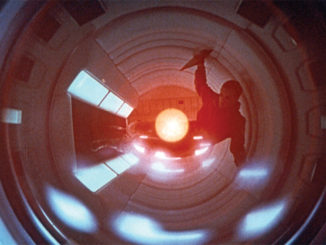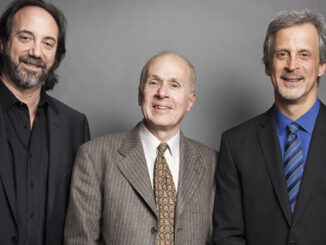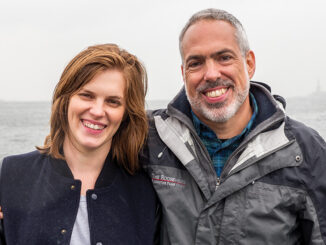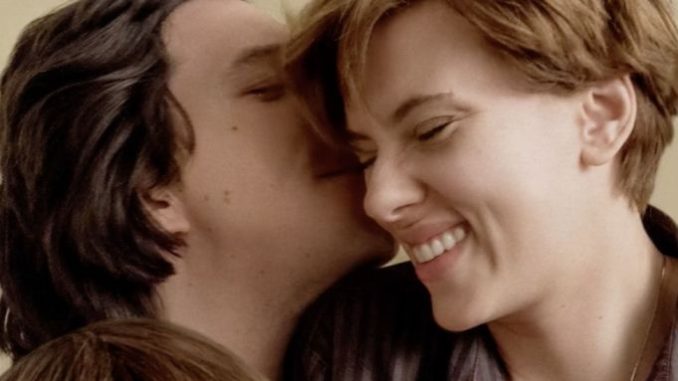
by Patrick Z. McGavin
Jennifer Lame, ACE, is one of the bright young lights of American independent cinema.
From “Frances Ha” (2012), the Oscar-winning “Manchester by the Sea” (2016) and the modern horror touchstone “Hereditary” (2018), the Philadelphia native has demonstrated a remarkable stylistic fluency as a picture editor, helping shape the works of leading American filmmakers such as Noah Baumbach, Kenneth Longergan, and Ari Aster.
She is currently at work on Christopher Nolan’s new film, “Tenet.”
She has edited Baumbach’s last five features. Their newest collaboration, “Marriage Story,” is one of the year’s most celebrated films. The story charts the complicated, tense, and bruising relationship of a celebrated young New York theater director (Adam Driver) and his actress wife played (Scarlett Johansson).
In a wide-ranging interview, Lame talked about the nature of her work and preserving the artistic integrity of the director’s vision.
CineMontage: This is the fifth film you have worked on with Noah Baumbach. What is the creative dynamic between the two of you?
Jennifer Lame: I think it has evolved quite a bit. When we first met, I hadn’t done a lot of editing work, and I came on “Frances Ha” as an assistant and got bumped up because his other editor had some other obligations.
Each movie our relationship kind of evolved. Starting with “The Meyerowitz Stories (New and Selected) [2017],” I started helping Noah early on in the script process. I would say on this movie, everything we had been doing together kind of locked in and worked really well. He sent me the first draft of the script. We started editing together right away. I came to the set more than I ever had. We talked on the phone every day. Every little thing we had started to put into practice on every single movie all came together on this movie, and it was really successful.
We did “Frances [Ha]” first together. I was able to be so experimental on that film. While we were cutting that movie in some weird closet in Times Square—that movie was so low-budget—Noah was shooting a pilot for HBO. I was actually left alone during the week.
He’d come in on the weekends and he’d watch a bunch of stuff and give notes. He had to leave during the week, which he’d never done before. He was always very much in the editing room. I had so much time to play around. In a weird way because our relationship was established like that, I feel like he has always been very open with me about experimenting and say: “Go try these five different things.” As a writer and director, he is not precious. He’d say, “Try moving this, or cutting that, and let’s just watch it and see what it does.”
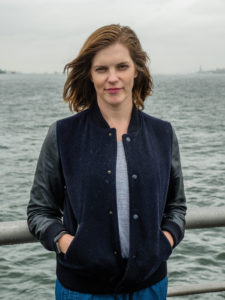
CineMontage: In “Marriage Story,” the first major scene between Nicole, Scarlett Johansson’s character, and the lawyer played by Laura Dern, is long and dense. How tough was that just to get that rhythm and pacing right?
Lame: That scene was very difficult, and we came back to it very often. The scene is the first really big one in the movie where you start to get a lot of information about what is going on. Up until that point, you are just kind of seeing these characters interact, but you have not been given a lot of information about what is going on. We are setting this tone, this idea of these lawyers, this notion of seduction, of Laura Dern trying to convince Scarlett of giving into this whole actual divorce legal element they were trying to avoid. Scarlett is telling her side of the story.
I think for a while the scene was too long, pre-monologue. It was too much information and it was this balance of getting the seduction right, getting just the right amount of exposition, which is that her character wants to stay in California and Charlie wants to live in New York. So setting up the story without making it boring and then getting to the monologue, and you don’t want to lose this audience before you get to the monologue because it’s quite long.
CineMontage: The movie is really an actors’ showcase.
Lame: I think for the actors, it was so challenging and fun for them because there are so many layers of performance. They’re performing in this relationship. When you go through a breakup, you almost forget who you are, fighting with this person. You are performing in a way. They tell these lawyers these horrible things about their spouses and then they are sitting in a courtroom and all of this stuff comes back to haunt him.
They are constantly performing. As an editor, it was constantly exciting to think about: who is this person now, who do they think they are, who are they opting for and what are they trying to accomplish.
I love the fight scene because Scarlett’s character, Nicole, shows up trying to be this calm and collected person that clearly the minute Charlie gets her goat, she snaps.
CineMontage: The scene where Charlie is being formally served with the divorce papers: Baumbach has said it’s like Hitchcock, where the bomb is placed under the table and everybody is waiting for it to explode.
Lame: That scene was really challenging because we really wanted the scene leading up to that to be so funny. I think up until that moment, the movie is getting increasingly serious and depressing. She is finally back with her mom and her sister, and we wanted to show that dynamic between her mom and her sister and show the audience why she wanted to be in Los Angeles so badly, to be close to her family. Making that scene funny also had that second job of really winning the audience over and making them understand why Nicole wants to be there. As you are laughing along, you are unconsciously absorbing that.
When I watched it a theater, I was always happy the audience is laughing, laughing, laughing and then all of a sudden: dead silence. That is what we wanted. You don’t want people just to keep laughing after he gets served because it’s so sad. It’s that crescendo of, how far do we want to take the laughter? And then slowly pull it back.
CineMontage: Either Nicole or Charlie are in every scene. How aware were you of not stacking the deck against either character?
Lame: That was something we constantly talked about. I think towards the end of the film, there were some things we took out to make sure in watching the film, you never feel it’s weighed toward one of the characters emotionally and narratively. We wanted the film to feel even. We were constantly thinking about that on
three levels: narratively, character-wise, and also time spent.
CineMontage: The movie has two big numbers from the Stephen Sondheim musical “Company,” that feel like a summation, a bringing together of so many of the themes and ideas of the film. Is that how you saw it?
Lame: I love that musical performance for so many different reasons. First of all, on a basic level, part of the reason Nicole and Charlie both fall in love is they both love theater. Just seeing them perform in those natural settings they both love makes them feel connected to me in a way that makes me really sad. I think that is really beautiful to have that end the film.
The other thing, I never thought of the film like “Kramer vs. Kramer” (1979), [as] a “divorce movie.” I always thought of it as a relationship movie. I actually thought of it like “Frances Ha,” a breakup film that is just complicated, just two people on a different journey. I thought of Nicole’s journey, in the beginning, she was the
spearhead of all of this and she recovered and moved on faster than Charlie.
His song is a realization, it’s finally dawning on him for the first time what has happened because he has been so caught up in getting back to New York I don’t think he has thought about the relationship part at all or the loss of Nicole. His song is so devastating and beautiful. He hasn’t thought about the fact that he is losing the woman he loved. It’s just these two characters on a totally different timeline.
CineMontage: What drew you to want to become an editor?
Lame: I always loved movies. When I went to film school, I was not exactly sure what I wanted to do, and I ended up making a documentary. I shot all of this footage and I had to edit it, and I became obsessed with finding the film in the editing room. I just realized I loved the editing process.
When I was younger, I was always a nerd. I played computer games and I liked playing board games. I love puzzles and mysteries. I think for me editing is fun because you have all of this stuff, and it’s a puzzle and you have to fit it together. It always locks in one right way. Finding that way is really daunting.
I think my brain has always liked that mental challenge. Growing up my dad was an investigative journalist and then he became a private investigator. I think it runs in my family, just liking to figure things out. The whole part of editing I find really thrilling.
CineMontage: You studied with the famous film historian Jeanine Basinger as Wesleyan. What was that like?
Lame: I wanted to go to a film school where you watched a lot of movies. I love analyzing movies. I wanted to go to a film school where it was very analytical rather than production-based. I like to know what I am doing before I do it.
CineMontage: How do you think your ideas about cutting and shaping performances have evolved since you started?
I am so lucky that I got my start with Noah because I care so much about character and performance and just finding through the story in the character and the
performance. If the story is good and the characters are good, then the movie is going to be good.
I remember when Ari Aster asked me to cut “Hereditary.” I said, “I don’t want to do a horror movie. I don’t like horror movies.”
He called me and said, “Look, I love Noah and ‘Manchester [by the Sea].’ I don’t want a horror editor. I just want to focus on the story and the family dynamic. I said, “I can do that.”
I’ve heard so many people tell me “Hereditary” is so scary, which is funny to me because I didn’t worry about that. I worried about making the characters good. It’s nice to know as long as you focus on that stuff, the other stuff falls into place.
Patrick Z. McGavin is a Chicago-based film critic and cultural journalist. His interviews, essays and film festival dispatches have appeared at RogerEbert.com and Chicago Reader.


